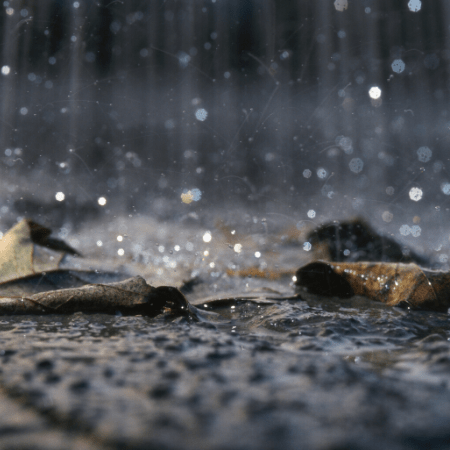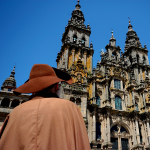ABOUT THE WEATHER.

An ideal walk is when temperatures are mild, a little breezy, and with sunshine but, unfortunately, the weather is not always like that. Here are the factors that will affect the difficulty of your walk on the Camino de Santiago….
Temperatures below 10C or above 28C.
For lower temperatures, you can indeed layer up but it makes things harder. When it gets quite warm, if not hot, it strains your body even more than lower temperatures. I would recommend to start earlier in the day to finish by 12h00 ish and avoid the sun right over your head for too long.
Rain.
The rain in Spain is not as wet as in other parts of the world. “What does he mean”? You might ask. Well, what I mean by that is Spain is a Mediterranean country and so temperatures are generally higher and humidity lower.
Hence, if it rains for an hour, it might not be that heavy, and it will dry out more quickly as compared to more nordic countries such as the UK and Ireland where humidity is higher and therefore keeps things wet even after the rain has stopped.
In any case, rain does impact the difficulty of your trip as walking through the rain all day long is more tiring physically and mentally.
Wind.
Wind rarely has a massive impact on the walking itself and comes usually with changes in weather. The greatest impact on wind is the multiplicator effect it has on cold (wind chill) and that it can get tiring when you have a front wind all day long.
So, the weather can affect your walk to various degrees. Remember to stay safe and sound and that if weather conditions are too bad either way (heat, cold, rain etc), you can shorten your day with public transportation or work around the weather depending on your schedule. The Camino is a journey that can present some challenges, not a race or challenge in itself.
However, having the right gear will help you overcome these, so check our packing list here.
Altitude gain and loss.
Some of the difficulty of walking the Camino comes from the altitude gain or loss during the day. You would be surprised by how we all see the world differently. What is a hill for some is a mountain for others and so on. On the Camino, you will have an altitude gain of 300-500m per day. Specifically on the French Way, an average altitude gain of 321, and on the Portuguese Way, an average altitude gain of 278m.
The challenge, however, is when you are going on a trip and there is that 1 day with 1000m altitude gain like on the first section of the French Way from St Jean Pied de Port to Roncesvalles (FR1). These days are longer and more challenging for sure. But they are still achievable to anyone who did a minimum prep for it.
Now, some people ease going up the steeper hills by walking backwards but I don’t think you can go on for too long that way. You can zigzag a bit if need be or just get on with it. It is temporary, and remember that what goes up …… has to go down! Some people see the downhill part as more challenging. In fact, the steeper the way down, the harder it is on your quad muscles, knees and ankles. So if that is you, you want to take it easy going downhill.
From an article by Followthecamino.
Highly recommended by HOSTAL GAU TXORI: comfortable accommodation, nice and traditional food and a wonderful natural landscape as you pass by Zubiri.
PS- we take all the security and hygiene measures to face the covid 19.



